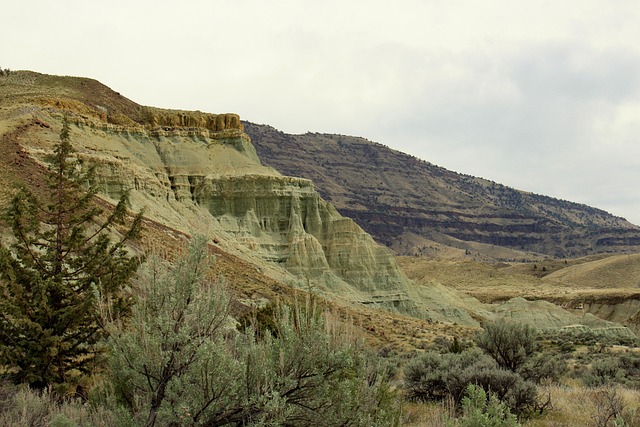The mid-19th century Oregon Gold Rush in Lane County sparked a transformative period with profound economic and cultural implications. The discovery of gold attracted diverse prospectors, disrupting Native American communities and driving rapid urban development. This boom left an indelible mark on the county's identity through cultural exchange, infrastructure improvements, and a hardy pioneer spirit. Today, Lane County still bears the legacy of this historic event, preserving its minesites and historic buildings while attracting visitors interested in gold rush economics.
“In the heart of Oregon, Lane County experienced a transformative era during the mid-19th century gold rush. This period brought about profound cultural and economic changes, shaping the region’s identity. The sudden influx of prospectors sparked an economic boom, attracting diverse populations and fostering unprecedented growth.
This article explores how the gold rush in Lane County ignited social dynamics, cultural shifts, and long-lasting economic effects, leaving a lasting legacy on the region’s history.”
- The Arrival of Gold: A Catalyst for Change in Lane County
- Economic Boom and Its Impact on Local Communities
- Social Dynamics: From Small Towns to Mining Booms
- Cultural Shifts: Diversity and Immigration in the Gold Rush Era
- Legacy of the Gold Rush: Long-Term Effects on Lane County's Economy
- Historical Preservation: Protecting the Story of Lane County's Gold Rush
The Arrival of Gold: A Catalyst for Change in Lane County

The discovery of gold in Lane County, Oregon, in the mid-19th century ignited a frenzy that forever altered the region’s cultural and economic landscape. This momentous event, often referred to as the Oregon Gold Rush, drew adventurers, prospectors, and dreamers from far and wide, each driven by the allure of fortune and the promise of prosperity. As news spread, the county experienced a rapid influx of newcomers, transforming its demographics and social fabric.
The economic impact was profound. The traditional Native American way of life was disrupted as miners encroached on ancestral lands. The once-vibrant indigenous communities faced competition for resources and territory. Simultaneously, the gold rush sparked an unprecedented construction boom in nearby towns like Eugene and Springfield, with saloons, shops, and housing developments springing up to cater to the growing population. This period witnessed a dramatic shift in Lane County’s cultural identity, marked by the blending of diverse backgrounds and the emergence of a rugged, pioneering spirit.
Economic Boom and Its Impact on Local Communities

The Lane County Oregon gold rush brought about a dramatic economic boom that transformed the local landscape and communities. With the discovery of rich gold deposits, the region experienced a surge in population as prospectors flocked to the area, driving up demand for resources, goods, and services. Towns that once were small farming communities grew into bustling centers of commerce with new businesses popping up to cater to the influx of people seeking their fortune. The economic vitality generated by the gold rush had a profound impact on local infrastructure, as roads, bridges, and public buildings were improved or constructed to support the burgeoning population and facilitate trade.
This period of prosperity led to significant cultural changes as well. The diverse group of immigrants who arrived during the gold rush brought with them various traditions, languages, and customs, enriching the social fabric of Lane County. The intermingling of these different cultures fostered a sense of community and mutual understanding, even as tensions arose from competition for resources and land. The economic boom also encouraged innovation and entrepreneurship, with many local residents establishing businesses that capitalized on the region’s newfound wealth, ensuring that the cultural legacy of the gold rush continues to shape Lane County even today.
Social Dynamics: From Small Towns to Mining Booms

The gold rush in Lane County, Oregon, brought about dramatic changes in social dynamics, transforming small towns into bustling mining hubs. The influx of prospectors and settlers from diverse backgrounds led to a rapid population growth, challenging the existing social structures. What had once been quiet rural communities evolved into vibrant yet chaotic centers of gold rush economics, with saloons, gambling halls, and bustling streets replacing tranquil landscapes.
This period witnessed a significant shift in community interactions as people from all walks of life converged, fostering both cooperation and competition. The traditional social hierarchies were disrupted, giving rise to new forms of leadership and community engagement. Miners, merchants, and entrepreneurs vied for success, contributing to the county’s cultural melting pot while also creating tensions related to resource allocation and power dynamics.
Cultural Shifts: Diversity and Immigration in the Gold Rush Era

During the gold rush era in Lane County, Oregon, a significant cultural shift occurred as diverse individuals from various parts of the world flocked to the region driven by the promise of wealth and opportunity. This influx transformed the demographic makeup of the county, enriching its tapestry with different ethnicities, backgrounds, and traditions. The economic boom attracted not only experienced miners but also farmers, merchants, and entrepreneurs who recognized the potential for growth in this burgeoning frontier.
As a result, small communities sprouted and grew rapidly, each developing its unique character shaped by the diverse pool of immigrants. The gold rush economics stimulated population growth, fostered new connections, and led to the establishment of vibrant multicultural hubs. This period marked a turning point in Lane County’s history, laying the foundation for its rich cultural heritage and shaping its identity as a welcoming place where people from all over the globe sought their fortune.
Legacy of the Gold Rush: Long-Term Effects on Lane County's Economy

The Gold Rush that swept through Lane County in the mid-19th century left an indelible mark on the region’s economy, shaping its trajectory for generations to come. Beyond the initial fervor of prospectors seeking their fortunes, the influx of people and resources had far-reaching consequences. The county’s infrastructure improved with the establishment of new roads, bridges, and towns, all of which facilitated trade and travel, benefiting local businesses and farmers.
This period also witnessed the diversification of Lane County’s economy. While gold mining remained a significant industry, other sectors like agriculture, logging, and fishing flourished due to the increased population and demand for goods. The legacy of this economic diversity continues to resonate today, contributing to the county’s resilience and prosperity as it navigates the ever-changing global market in terms of gold rush economics Lane County.
Historical Preservation: Protecting the Story of Lane County's Gold Rush

Lane County’s gold rush history is a significant chapter that shaped its cultural identity and economic landscape. The discovery of gold attracted prospectors from all over, leading to rapid population growth and the establishment of vibrant mining communities. Today, preserving this historical legacy is paramount to understanding Lane County’s roots. Local efforts focus on safeguarding the remnants of this era, including ancient minesites, historic buildings, and artifacts that tell the tale of the county’s past.
These preservation initiatives ensure that future generations can explore and appreciate the gold rush’s impact. By protecting and sharing these historical sites, the community can foster a deeper connection to its roots while also attracting visitors interested in Oregon’s rich gold rush history. Thus, Lane County continues to preserve its unique cultural heritage, allowing residents and tourists alike to delve into and experience this fascinating period.
